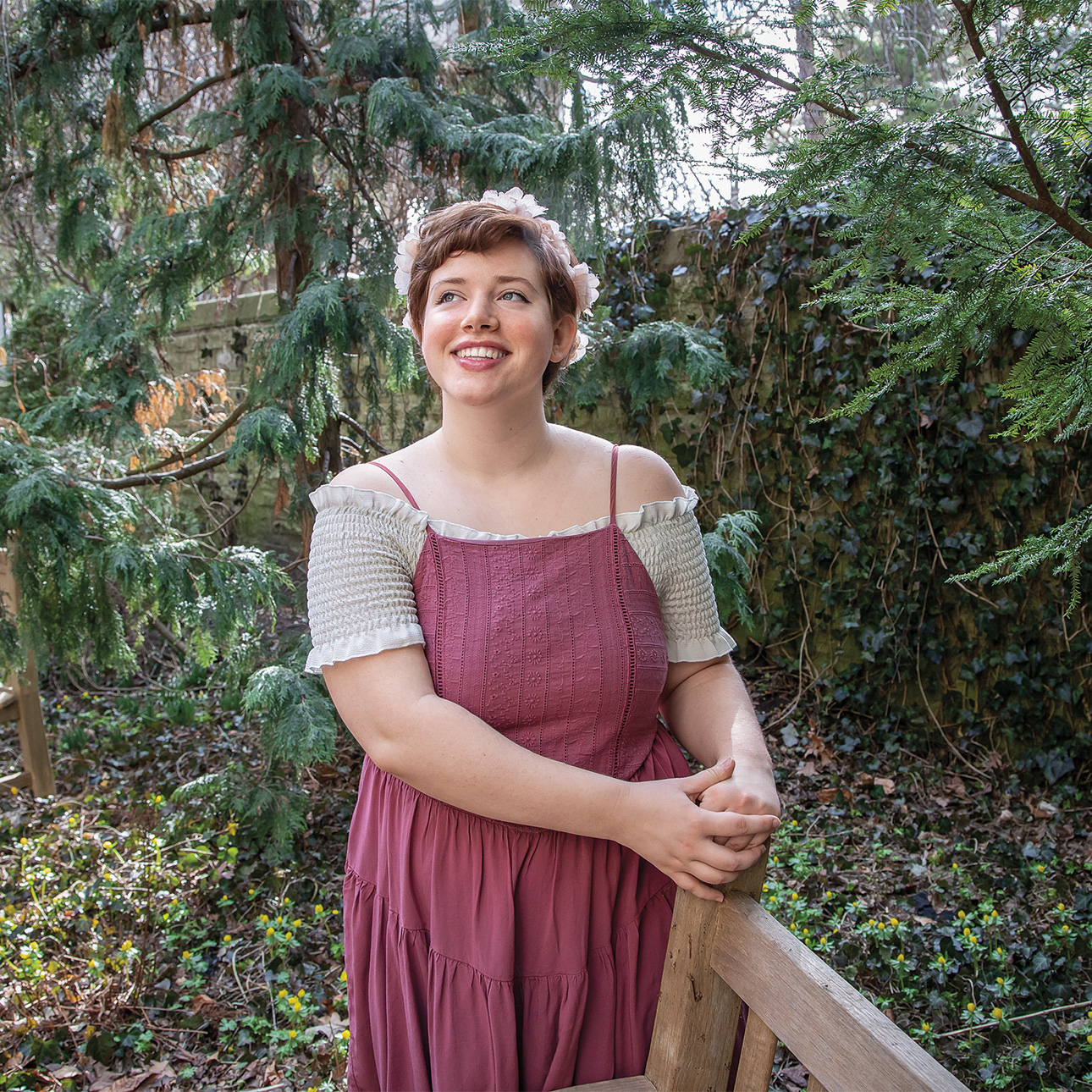Growing up in St. Paul, Minn., senior Elizabeth Dudley loved sewing and working with textiles. Now her hobby is a focus of her studies at Northwestern, where she is exploring the intersection of fashion, technology and aesthetic trends.
“Textiles [can teach us a lot] about different points in our history,” says Dudley, an art history major with a concentration on the history of costume. One of humanity’s “most essential technologies,” fashion has evolved from a practical means of keeping oneself warm into “a status symbol, a point of trade, a way of expression,” she says.
As part of her History of Innovation class, co-taught by Farley Center for Entrepreneurship and Innovation director Hayes Ferguson and adjunct lecturer and startup founder Michael Saunders, Dudley did a deep dive into the history of the sewing machine.
The sewing machine made textile production quicker and more commercially available, allowing clothing to become a vehicle for personal expression. “This complicated piece of machinery changed fashion and commercial culture in general,” says Dudley. The invention of social media then created an online commons for people to develop and share new fashion trends.
Dudley is writing her honors thesis about one such trend: cottagecore — an aesthetic that reflects a pastoral way of life, expressed through fashion, home décor and other lifestyle elements. (Think poofy, Marie Antoinette–like dresses, thrifted vintage teapots, gingham cloths and peaceful picnics in grassy fields.) Though it’s been around since the 2010s, cottagecore exploded in popularity in 2020 with the onset of the pandemic, drawing appeal from the peaceful vibes and escapism it provided during an otherwise chaotic time.
“Cottagecore is a way for individuals to filter and revisualize the world,” Dudley says. Ironically, though the trend itself romanticizes rural life and an escape from modern technology, its existence and popularity stem directly from the ease of sharing images online. Dudley’s thesis explores the influence of technological advancements — from the invention of the sewing machine to the rise of social media — on fashion trends and self-presentation. Cottagecore, she says, represents a new form of cultural discourse emerging at the intersection of art and technology.




Reader Responses
No one has commented on this page yet.
Submit a Response